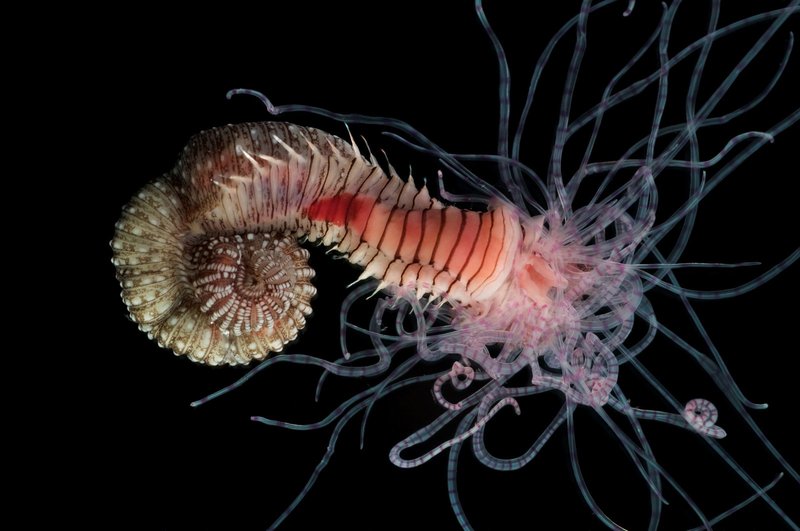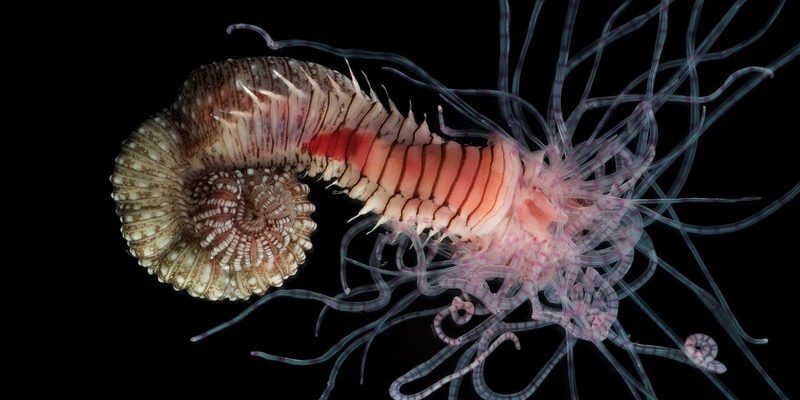
Marine polychaetes are not just your average worms; they’re known for their colorful bristles and various adaptations that make them incredible survivors. Think of them like the colorful street performers in our bustling city analogy—each one has a special skill that enriches their community. By understanding these worms better, we can appreciate the complexity of marine life and the importance of biodiversity. So, grab your coffee, and let’s dive into the fascinating world of marine polychaetes and their close relatives!
What Are Marine Polychaetes?
Marine polychaetes belong to the class Polychaeta, which means “many bristles” in Greek. These worms are found in a variety of marine environments, from rocky shores to deep-sea habitats. What sets them apart is their unique body structure. Each polychaete has a segmented body with distinct regions, including a head that often features specialized appendages like tentacles or palps. Think of these tentacles as their way of reaching out to the world around them, helping them sense their environment and find food.
Most polychaetes are scavengers or predators. They have adapted to utilize a variety of food sources, from tiny plankton to detritus—decayed organic matter. Some are even filter feeders, using their branched appendages to capture particles from the water. Their ability to adapt to different modes of feeding allows them to inhabit diverse marine environments, making them incredibly versatile.
Another fascinating trait of marine polychaetes is their ability to reproduce. Many have external fertilization, where eggs and sperm are released into the water, leading to a free-swimming larval stage. This helps spread their species across large areas of the ocean. It’s pretty remarkable how these tiny creatures manage to thrive in such vast spaces, wouldn’t you agree?
Similar Worm Species in Marine Habitats
In marine environments, there are several other worm species that share habitats with polychaetes. These include oligochaetes, nemerteans, and sipunculids. Each of these worms has its unique characteristics and adaptations that allow them to coexist in the same space. Oligochaetes, for instance, are more common in freshwater but can also be found in brackish waters. They lack the colorful bristles that polychaetes are known for, making them less flashy but equally important.
You might be wondering how these worms compare in terms of diet or habitat. While polychaetes are more diverse in their feeding strategies, oligochaetes tend to be more specialized. They’re mostly detritivores, feeding on decaying organic matter. This difference in diet shows how various species can occupy similar niches in an ecosystem without direct competition.
Let’s not forget about the nemerteans, often called ribbon worms. They are stretched out, sometimes more than a meter long! They have unique adaptations too, such as a proboscis that can be quickly ejected to catch prey. This makes them efficient predators, giving them a different role in the ecosystem compared to the scavenging polychaetes.
Habitats and Adaptations
Marine polychaetes thrive in various habitats, from sandy beaches to deep-sea trenches. They often hide in burrows or crevices to avoid predators and find food. This adaptability to different environments is critical for their survival. In comparison, oligochaetes might prefer the soft sediments of estuaries, where they can easily burrow and feed on organic matter.
The secret to polychaetes’ success lies in their physiological adaptations. For example, many have specialized gills or parapodia—side structures that help them move and breathe simultaneously. Imagine having a pair of fins that doubled as lungs; that’s how efficient these worms are! On the flip side, oligochaetes typically rely on diffusion for gas exchange, which limits where they can thrive.
You might also find it interesting that some marine polychaetes display beautiful coloration and patterns, which can serve as camouflage or a warning to predators. This vividness adds to the rich tapestry of life in marine environments, showcasing the beauty of evolution.
Feeding Strategies and Ecological Roles
Both marine polychaetes and their relatives have unique feeding strategies that significantly impact their ecosystems. As mentioned earlier, polychaetes can be scavengers, predators, or filter feeders. For example, the bloodworm (Glycera) is a well-known predator among polychaetes, using its jaws to capture prey effectively. This predatory behavior helps control populations of other small marine animals and maintains ecological balance.
In contrast, oligochaetes primarily contribute to the breakdown of organic matter, enriching the sediment and making nutrients available for other organisms. This process is vital for maintaining healthy marine ecosystems. Think of them as nature’s recyclers, turning waste into nourishment for other life forms.
Consider the case of a sandy beach teaming with life: as polychaetes scavenge and oligochaetes break down materials, they create a bustling community where nutrients circulate. Without these worms, the beach ecosystem could become unbalanced, affecting everything from the smallest plankton to larger animals that depend on them.
Reproductive Strategies
Reproduction is another area where marine polychaetes shine. Many exhibit remarkable diversity in their reproductive strategies. Some polychaetes are capable of asexual reproduction, while others rely on sexual reproduction, often with spectacular mating rituals. The spawn of many species creates a stunning sight, with clouds of gametes released into the water, ensuring a wide dispersal of offspring.
Oligochaetes, on the other hand, generally reproduce sexually, with some forming cocoons for their eggs. While their methods may be less flashy than the extravagant polychaete displays, they still ensure the survival of their species. The fact that they lay fewer eggs at a time allows for more care and protection of the young, albeit at the cost of producing a higher number of offspring.
This variety in reproductive strategies showcases the incredible adaptability of these worms. They’ve managed to thrive and survive in many habitats, demonstrating nature’s ability to experiment and find success in different ways.
Conservation and Importance
Marine polychaetes and their relatives play essential roles in maintaining healthy marine ecosystems. They contribute to nutrient cycling, which is vital for the survival of other marine life. However, like many organisms, they face threats from pollution, habitat destruction, and climate change.
When we talk about conservation, it’s essential to recognize that protecting these worm species also means protecting the broader marine ecosystem. Healthy populations of polychaetes and oligochaetes indicate a thriving environment, while declines can signal problems.
As we learn more about these fascinating creatures and their ecological roles, we become more aware of how our actions impact marine life. Simple steps, such as reducing plastic waste and advocating for clean ocean initiatives, can help preserve these crucial species for generations to come.
In a nutshell, marine polychaetes and their similar worm species are more than just simple creatures. They are integral players in the complex web of marine life, helping us understand the balance of ecosystems. Knowing about them not only sparks curiosity but also cultivates a deeper appreciation for the diversity of life beneath the waves.
In conclusion, exploring the world of marine polychaetes and their similar worm species opens our eyes to the complexity of marine ecosystems. Each worm species has its unique adaptations and roles, contributing to the vibrancy and health of our oceans. Let’s cherish and protect these amazing creatures for the future of our planet’s marine environments.

